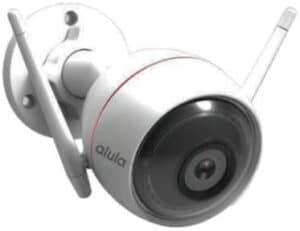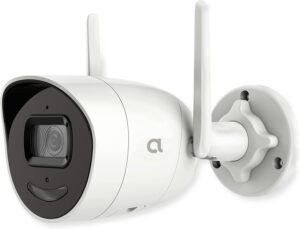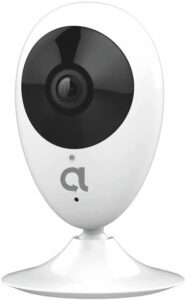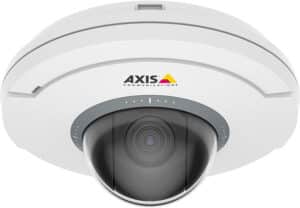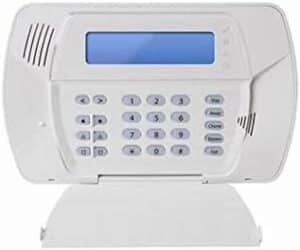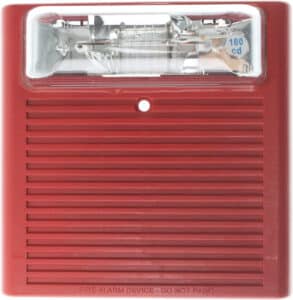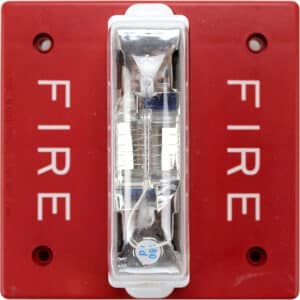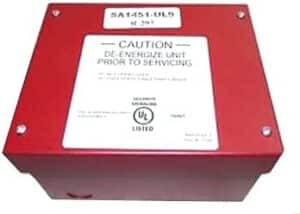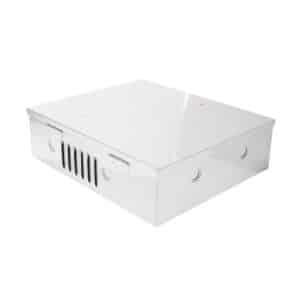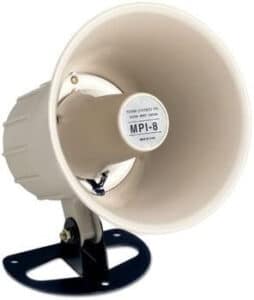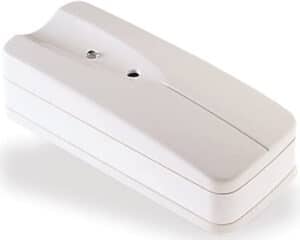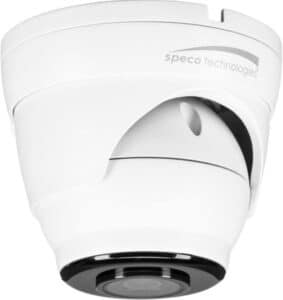How Structured Wiring Can Support Smart Home Security Trends
In the digital age, smart home security has been a buzzword for a while now. And why not? With advancements in technology, smart home security has become easier, more affordable and a necessity for many homeowners.
As a result, structured wiring systems have become an integral part of smart home security to keep up with modern trends. With a structured wiring system in place, your smart home security can operate at premier levels, giving you better control over the security measures in your home.
In this article, we will discuss how structured wiring can support smart home security trends, and why it’s crucial to have them installed in your home.
Table of Contents
What is Structured Wiring and How Does it Work?
Structured wiring is a comprehensive cabling and connectivity infrastructure that provides an organized and centralized method to distribute various services throughout a home. These services may include telephone, television, internet, home automation, and home security. It operates as the backbone for all your smart home monitoring devices, allowing them to communicate with each other seamlessly.
The structured wiring system typically consists of a central distribution panel or enclosure where all the cables are connected. From this central hub, individual cables run to various rooms and areas in the house. This ensures that every part of the home is connected, enabling smooth data transmission and communication between devices.
One key advantage of structured wiring is its flexibility. As your needs change over time, you can easily reconfigure the system without having to rewire everything. This makes it an ideal choice for supporting the latest automated home security technologies, as well as future smart home trends.
Understanding Smart Home Security Trends in the Digital Age
As the home security industry continues to evolve, intelligent home security systems have become more popular. These systems offer enhanced protection and convenience, thanks to their integration with smart home technology. Some of the latest smart home trends include remote monitoring, voice control, facial recognition, and integration with other smart devices.
Smart home statistics reveal a growing interest in smart homes security, with more households adopting such systems every year. As a result, the home security systems market has expanded, with a range of innovative products and solutions available to homeowners. This has led to an increased demand for robust and reliable infrastructure to support these advanced security systems.
In this digital age, home security technology has become more sophisticated, with devices that can learn and adapt to your routines and preferences. With the rise of the Internet of Things (IoT), security smart homes are becoming the norm, offering a higher level of protection and convenience than ever before.
Benefits of Structured Wiring for Smart Home Security
Structured wiring offers numerous benefits for smart home security, making it an essential component of any modern home security system. Here are some of the advantages of using structured wiring for your home security smart home:
- Reliability: Structured wiring provides a dependable and stable foundation for your home security system. By using high-quality cables and connectors, you can ensure that your devices will operate without any interruptions or signal loss.
- Scalability: As your home security needs change and grow, structured wiring allows you to easily add new devices and services. This means you can keep up with the latest home automation trends and adopt new home security technologies as they become available.
- Interoperability: Structured wiring makes it easy to integrate your smart home monitoring system with other home automation systems. This means you can create a unified, intelligent home security ecosystem that offers seamless control over all aspects of your home.
- Future-proofing: By investing in a structured wiring system, you are future-proofing your home for advancements in the home security market. This ensures you can easily upgrade to the most advanced home security system without having to rewire your entire home.
- Efficiency: Structured wiring helps to minimize energy consumption and reduce overall costs. By centralizing your smart home technology, you can optimize your system’s performance and ensure everything runs as efficiently as possible.
Types of Structured Wiring and Devices for Home Security
There are several types of structured wiring and devices available for home security, each with its own unique features and benefits. Some of the most common options include:
- Ethernet cabling: Ethernet cables, such as Cat5e or Cat6, are commonly used for data transmission in smart home security systems. These cables can support high-speed connections and allow for seamless communication between devices.
- Coaxial cabling: Coaxial cables are used for distributing television signals and can also support certain smart home surveillance systems. This type of cabling is ideal for homes with multiple TVs or security cameras.
- Fiber-optic cabling: Fiber-optic cables offer the fastest data transfer speeds and are ideal for smart home monitoring systems that require large amounts of bandwidth. These cables are particularly useful for homes with multiple high-definition security cameras.
- Wireless devices: Many smart home security devices, such as iSmart home security systems, use wireless communication to connect to the internet and each other. While wireless devices offer convenience and ease of installation, they may be more susceptible to interference and hacking than wired systems.
- Security sensors and detectors: Structured wiring can support various types of sensors and detectors, including motion sensors, door/window contacts, and glass break detectors. These devices can be integrated into your smart home security system to provide comprehensive protection.
- Surveillance cameras: Smart home surveillance cameras can be connected to your structured wiring system, allowing you to monitor your home remotely and receive real-time alerts if any unusual activity is detected.
How Structured Wiring Can Support Smart Home Security Trends
Structured wiring plays a crucial role in supporting the latest smart home security trends by providing a stable and reliable infrastructure for your devices. Some of the ways structured wiring can support these trends include:
- Remote monitoring: Structured wiring enables you to access your smart home surveillance system from anywhere, using your smartphone or computer. This allows you to monitor your home in real-time and receive instant alerts if any suspicious activity is detected.
- Voice control: Many smart home security systems now support voice control, allowing you to issue commands using your voice assistant, such as Amazon Alexa or Google Assistant. Structured wiring ensures that your voice commands are transmitted quickly and accurately, allowing your devices to respond promptly.
- Facial recognition: Structured wiring can support advanced security features such as facial recognition, which uses advanced algorithms to identify and verify the identity of individuals entering your property. This adds an extra layer of security, helping to prevent unauthorized access.
- Integration with other smart devices: Structured wiring makes it easy to integrate your smart home security system with other home automation systems, such as lighting, heating, and entertainment. This creates a seamless, intelligent ecosystem that offers enhanced convenience and control.
- Adopting new home security technologies: As the home security industry continues to evolve, structured wiring ensures that your system can easily accommodate the latest home security trends and technologies. This ensures you always have the most advanced home security system in place.
Wiring and Cabling Standards for Smart Home Security Systems
When it comes to structured wiring for smart home security, it’s essential to follow industry standards and best practices. This ensures your system operates efficiently, securely, and reliably. Some of the key standards to consider include:
- TIA/EIA-568: This is a set of telecommunications standards established by the Telecommunications Industry Association (TIA) and the Electronic Industries Alliance (EIA). It covers the minimum requirements for the design and installation of structured cabling systems, including copper and fiber-optic cabling.
- ISO/IEC 11801: This international standard provides guidelines for the installation and performance of structured cabling systems in residential and commercial buildings. It covers both copper and fiber-optic cabling, as well as wireless systems.
- National Electrical Code (NEC): The NEC is a set of standards and guidelines for the safe installation of electrical wiring and equipment in the United States. It includes requirements for the installation of structured cabling systems, such as grounding, cable routing, and fire protection.
- CENELEC EN 50173: This European standard covers the design, installation, and performance of structured cabling systems in residential and commercial buildings. It includes requirements for copper, fiber-optic, and wireless systems.
By adhering to these standards, you can ensure that your smart home security system is installed correctly, operates efficiently, and meets all safety requirements.
Choosing the Right Structured Wiring System for Your Home
When selecting a structured wiring system for your home, it’s essential to consider several factors, including your current and future security needs, budget, and existing infrastructure. Here are some tips to help you choose the right system for your home:
- Assess your security needs: Determine what features and devices are critical for your home security system. This may include surveillance cameras, motion sensors, door/window contacts, and more. Knowing your requirements will help you select the right structured wiring system to support your needs.
- Consider future upgrades: As the home security industry continues to evolve, new technologies and trends will likely emerge. Choose a structured wiring system that is flexible and scalable, allowing you to easily upgrade and expand your system as needed.
- Evaluate your budget: Determine how much you’re willing to invest in your structured wiring system. Keep in mind that while a more extensive system may be more expensive upfront, it can save you money in the long run by providing a reliable and future-proof infrastructure.
- Consult with a professional: If you’re unsure which structured wiring system is right for you, consult with a professional installer or home security expert. They can assess your needs and recommend the best solution for your home.
Installing Structured Wiring for Smart Home Security
Once you’ve selected the right structured wiring system for your home, it’s time to begin the installation process. Here are some tips to ensure a smooth and successful installation:
- Plan your layout: Before you start installing your structured wiring system, create a detailed plan of your home, including the location of each device and cable run. This will help you determine the most efficient and effective way to route your cables and install your devices.
- Choose high-quality materials: Select high-quality cables and connectors to ensure your system operates efficiently and reliably. This will also help to minimize potential issues and maintenance requirements in the future.
- Follow industry standards: Adhere to the wiring and cabling standards outlined earlier in this article to ensure your system is installed correctly and meets all safety requirements.
- Test your system: Once your structured wiring system is installed, test each device and connection to ensure everything is working correctly. This will help you identify and address any issues before they become more significant problems.
- Consider professional installation: If you’re not comfortable installing your structured wiring system yourself, consider hiring a professional installer. They have the experience and expertise to ensure your system is installed correctly and efficiently.
Maintaining Structured Wiring for Optimal Home Security
To ensure your structured wiring system continues to operate efficiently and support your smart home security needs, it’s essential to perform regular maintenance. This includes:
- Inspecting your cables and connections: Regularly check your cables and connections for any signs of damage or wear. If you notice any issues, replace the affected components as soon as possible.
- Cleaning your devices: Dust and dirt can accumulate on your devices over time, potentially affecting their performance. Regularly clean your devices to ensure they continue to operate efficiently.
- Updating your system: As new home security technologies become available, update your structured wiring system to support these advancements. This may involve upgrading your cables, connectors, or devices.
- Testing your system: Regularly test your smart home security system to ensure it’s functioning correctly. This will help you identify and address any issues before they become more significant problems.
Troubleshooting Structured Wiring Problems in Smart Home Security
If you encounter any issues with your structured wiring system, it’s essential to troubleshoot and resolve them as soon as possible. Here are some common structured wiring problems and how to address them:
- Loose or damaged connections: If you notice a loose or damaged connection, tighten or replace the affected component as needed. This will help to ensure your devices continue to communicate effectively.
- Signal interference: If your structured wiring system is experiencing signal interference, identify the source of the problem and take steps to address it. This may involve re-routing your cables, installing shielding, or upgrading to higher-quality components.
- Device failure: If a device in your smart home security system fails, test the device and its connections to determine the cause of the issue. If the problem is related to your structured wiring system, make the necessary repairs or replacements as needed.
Integrating Structured Wiring and Smart Home Security with Other Home Automation Systems
Structured wiring can easily be integrated with other home automation systems, such as lighting, heating, and entertainment. This allows you to create a cohesive, intelligent ecosystem that offers enhanced convenience and control. Here are some tips for integrating your structured wiring and smart home security with other home automation systems:
- Choose compatible devices: When selecting devices for your smart home security and home automation systems, ensure they are compatible with your structured wiring system. This will help to ensure seamless communication and control.
- Centralize control: Use a central control hub or app to manage all aspects of your smart home security and home automation systems. This will make it easier to control and monitor your entire home from one convenient location.
- Optimize system performance: Regularly evaluate the performance of your smart home security and home automation systems and make any necessary adjustments or upgrades. This will help to ensure your systems continue to operate efficiently and effectively.
Future of Structured Wiring in Smart Home Security – What to Expect
As the home security industry continues to evolve, structured wiring will play an increasingly important role in supporting the latest technologies and trends. Some potential developments in the world of structured wiring and smart home security include:
- Increased adoption of IoT devices: As more IoT devices are introduced, structured wiring systems will need to support higher levels of connectivity and communication. This may involve upgrading to more advanced cables and connectors or incorporating wireless technologies.
- Advancements in artificial intelligence (AI): As AI continues to advance, smart home security systems will become even more intelligent and adaptable. Structured wiring systems will need to support these advancements by providing a stable and reliable infrastructure for AI-powered devices.
- Integration with 5G networks: As 5G networks become more widespread, structured wiring systems may need to be updated to support the increased speeds and bandwidth offered by these networks.
- Greater focus on cybersecurity: As smart home security systems become more advanced, the need for robust cybersecurity measures will become even more critical. Structured wiring systems will play a crucial role in ensuring that your devices and data remain secure from potential threats.
Conclusion
Structured wiring can indeed support the latest smart home security trends by offering seamless integration and efficient operations. From voice-controlled systems to remote access, a well-designed structured wiring system can provide homeowners with peace of mind and protection.
If you’re looking to boost your home security but aren’t sure where to start, Xcessory Zone offers a range of affordable and easy-to-install DIY home security products. From motion sensors to smart locks, their reliable and innovative devices can help you keep your home safe and secure.
Don’t wait until it’s too late to improve your home security – act now and invest in a structured wiring system along with Xcessory Zone’s cutting-edge security products for ultimate protection. Your family and property’s safety is worth it.
FAQs
What is structured wiring and how can it support smart home security trends?
Structured wiring refers to a network of cables that connect all of the electrical devices in a home. It can support smart home security trends by providing a stable and reliable connection for various devices, such as security cameras and sensors. This allows for better integration and communication between devices, leading to a safer and more secure home.
How does structured wiring compare to wireless options for smart home security?
While wireless options may seem more convenient, structured wiring offers a more secure and reliable connection for smart home security. Wireless signals can be disrupted by external factors, such as interference or distance, whereas structured wiring provides a physical connection that is not susceptible to these issues.
What are some best practices for implementing structured wiring in a smart home security system?
Some best practices for implementing structured wiring in a smart home security system include planning the network layout carefully, using high-quality cables and connectors, and ensuring proper grounding and surge protection. It’s also important to label and organize the cables for easy troubleshooting and maintenance. Hiring a professional installer can help ensure these best practices are followed.
Meet Our Partners!




